Abstract
A theoretical efficiency has been calculated from the known urea clearance of the artificial kidney, the assumed total body water of the patient, and the initial plasma urea.
The efficiency of dialysis never significantly exceeded the calculated figure. In some patients with trauma or glomerulonephritis the efficiency was very poor whereas in patients with renal failure complicating pregnancy the actual and calculated efficiencies were very close.
These observations are discussed and possible reasons for the failure of dialysis to bring down the plasma urea to the expected concentration are suggested.
Full text
PDF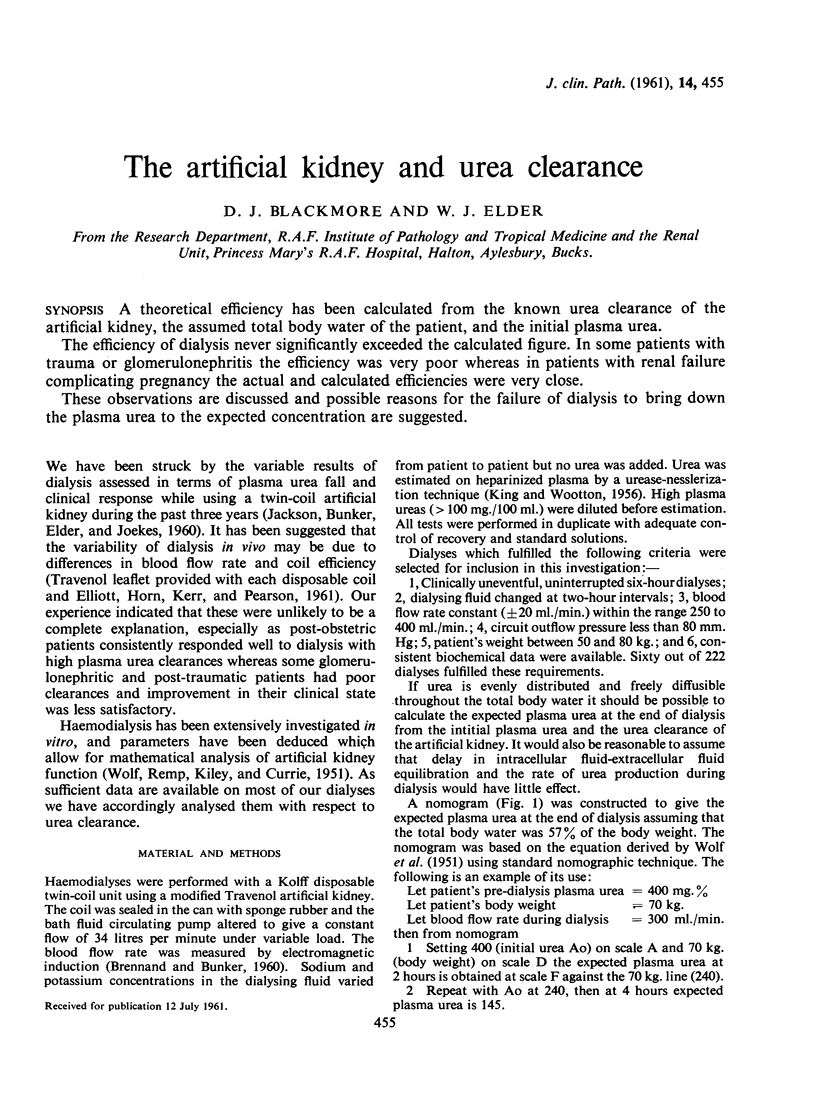
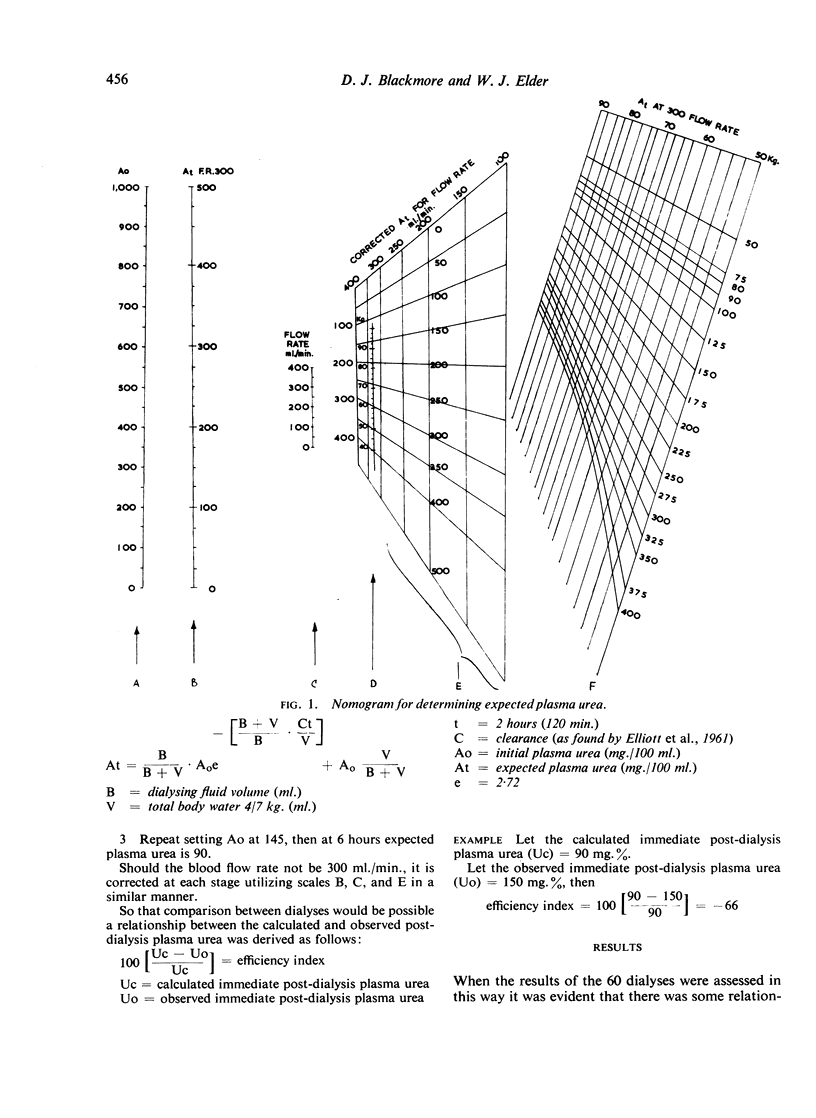
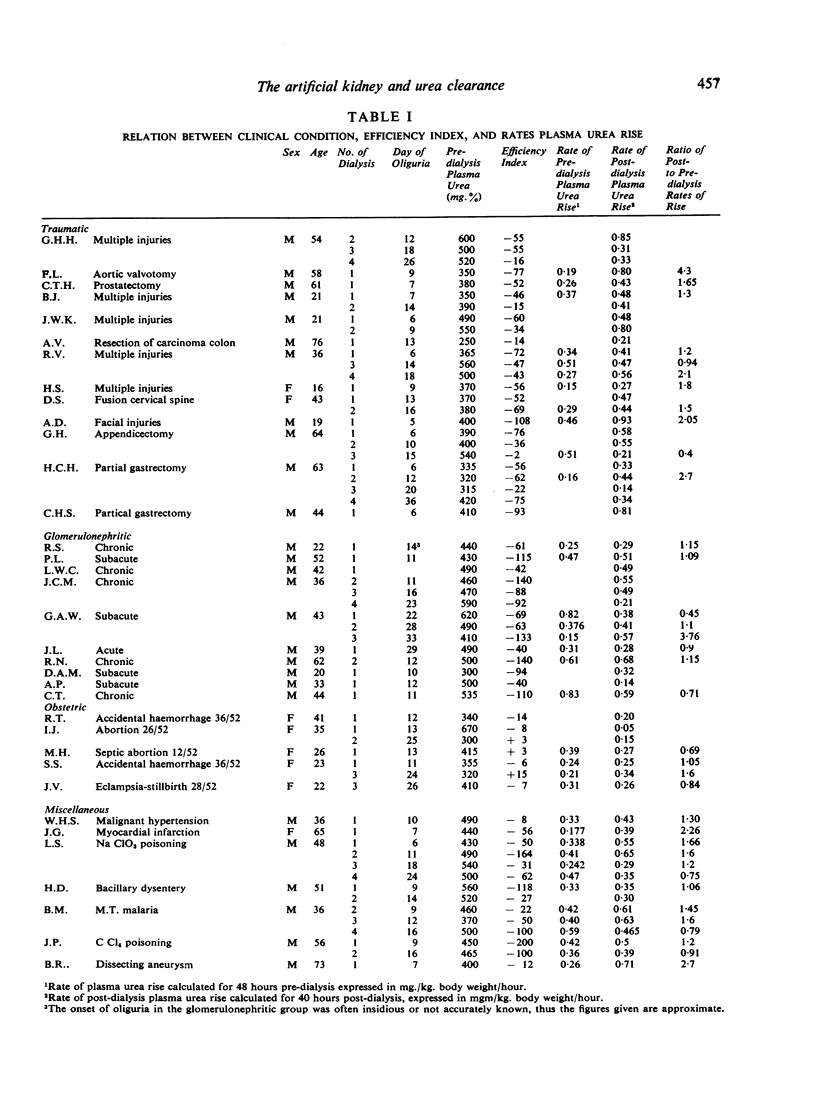
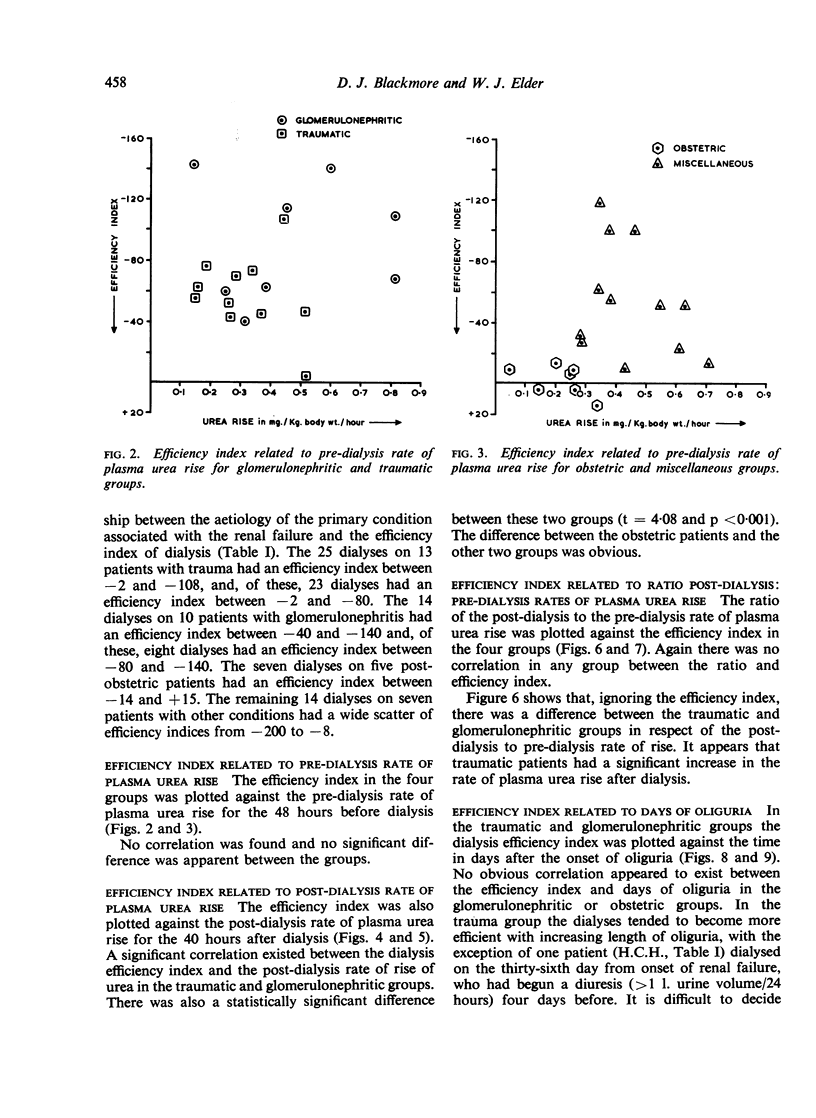
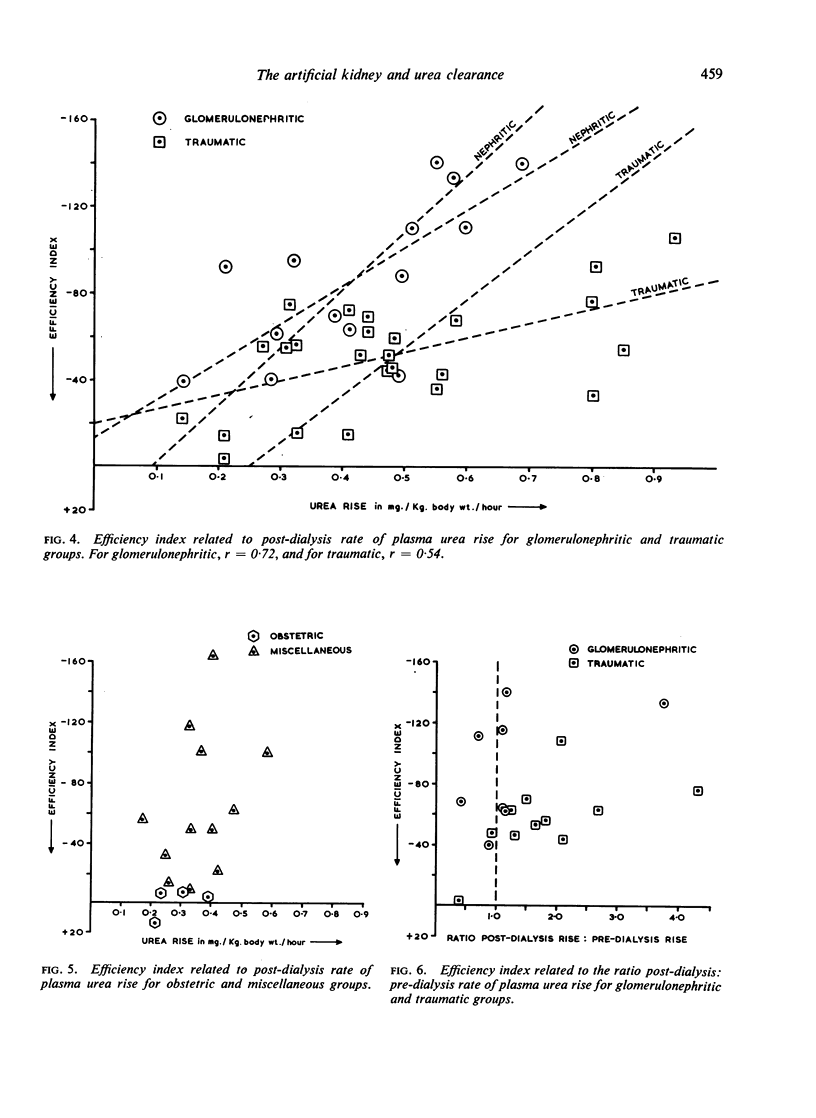
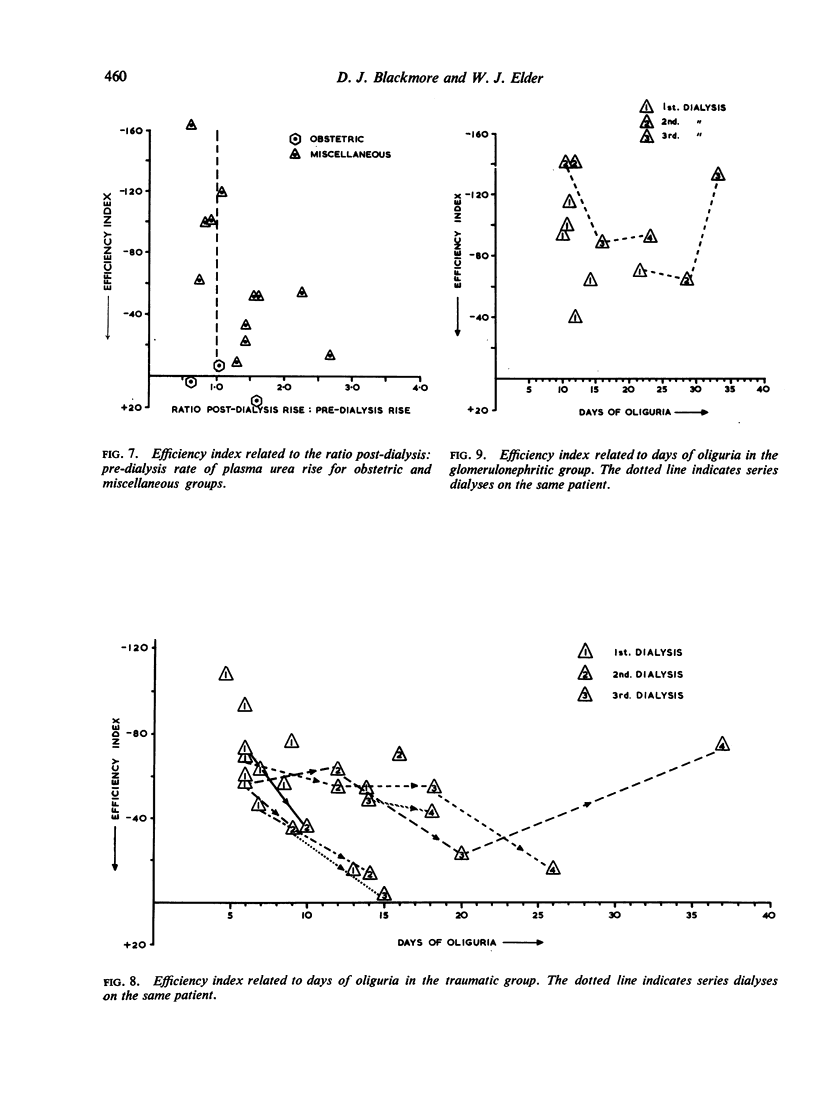
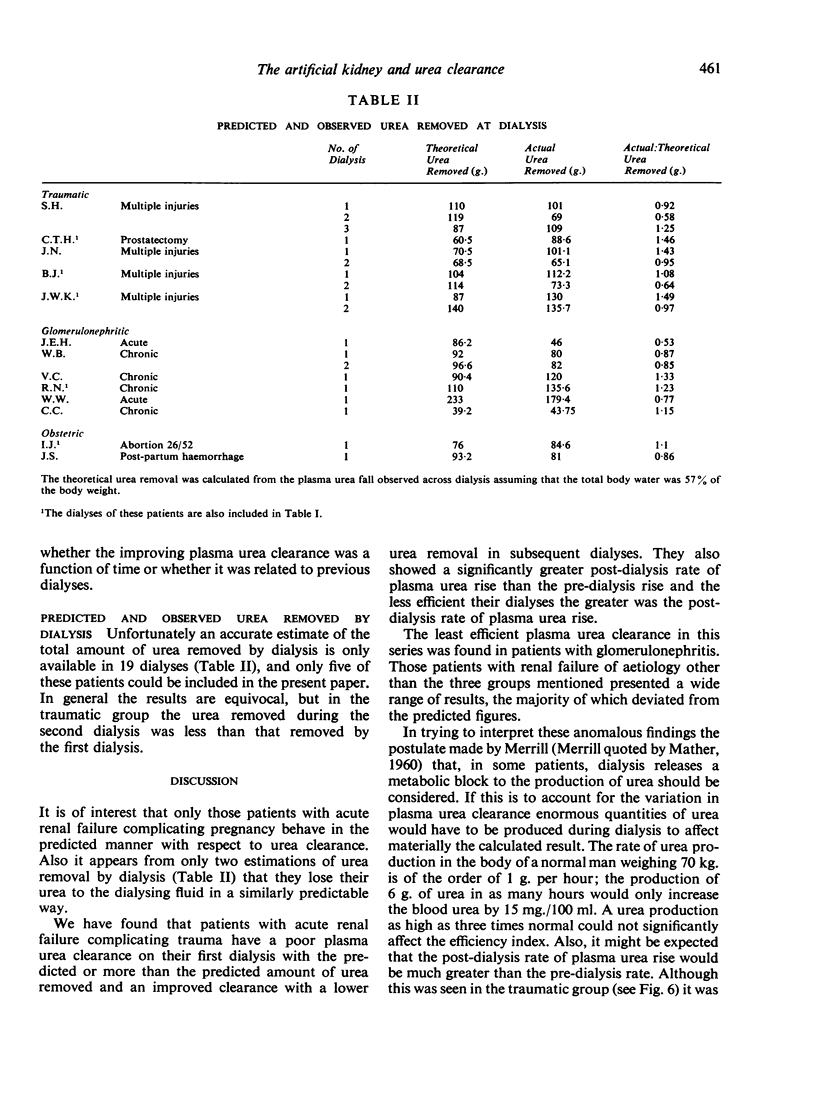
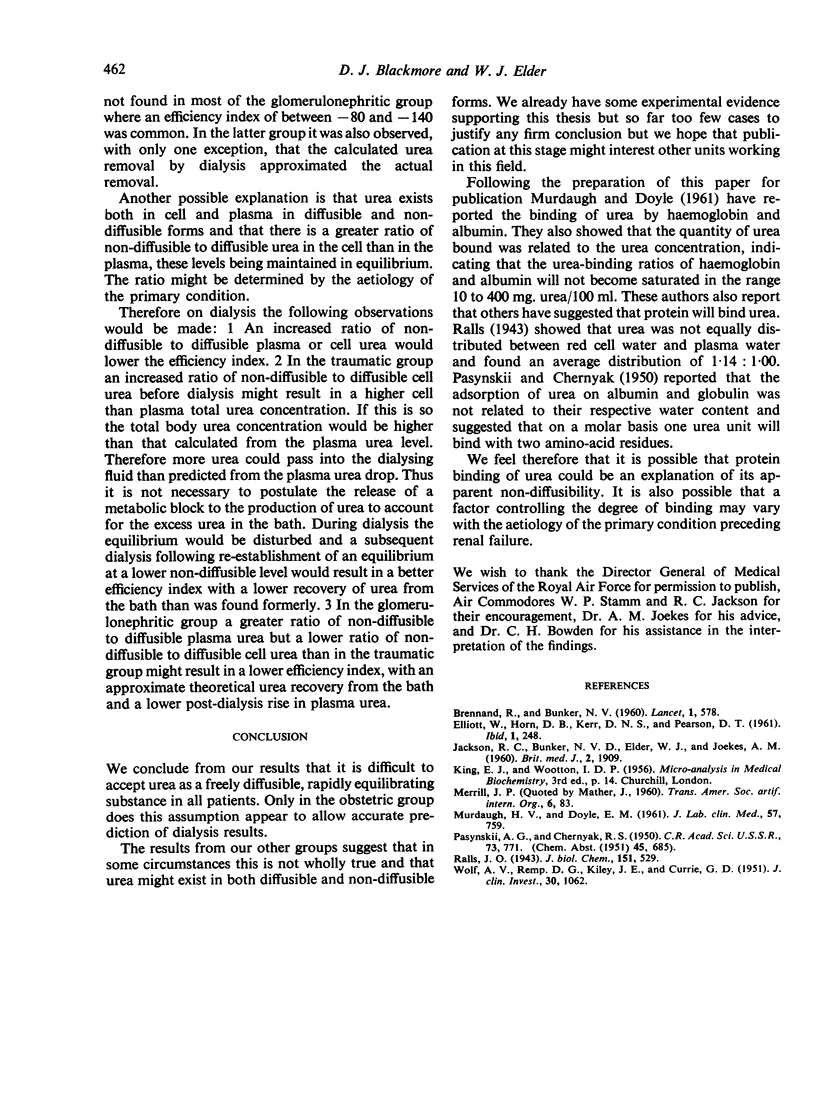
Selected References
These references are in PubMed. This may not be the complete list of references from this article.
- BRENNAND R., BUNKER N. V. Electronic monitoring apparatus for coil kidney. Lancet. 1960 Mar 12;1(7124):578–579. doi: 10.1016/s0140-6736(60)92783-5. [DOI] [PubMed] [Google Scholar]
- JACKSON R. C., BUNKER N. V., ELDER W. J., JOEKES A. M. Treatment of renal failure in a unit with facilities for haemodialysis (twin-coil artificial kidney). Results with 80 patients. Br Med J. 1960 Dec 31;2(5217):1909–1916. doi: 10.1136/bmj.2.5217.1909. [DOI] [PMC free article] [PubMed] [Google Scholar]
- MURDAUGH H. V., Jr, DOYLE E. M. Effect of hemoglobin on erythrocyte urea concentration. J Lab Clin Med. 1961 May;57:759–762. [PubMed] [Google Scholar]
- WOLF A. V., REMP D. G., KILEY J. E., CURRIE G. D. Artificial kidney function; kinetics of hemodialysis. J Clin Invest. 1951 Oct;30(10):1062–1070. doi: 10.1172/JCI102526. [DOI] [PMC free article] [PubMed] [Google Scholar]


